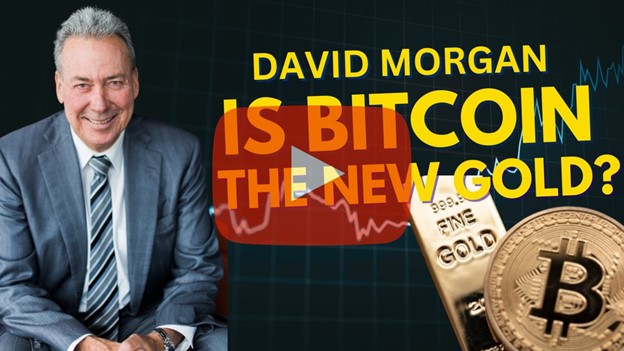Dollar dominance is slowly ebbing as the world looks to diversify away from the greenback.
The share of dollars making up global reserves has dropped by 14 percent since the turn of the century, according to data compiled by the Atlantic Council.
As of 2002, dollars accounted for 72 percent of global reserves. Today, dollars make up about 58 percent of reserves.
This doesn’t mean the dollar is about to collapse, but it does reveal a slow drift away from dollar dominance as other countries seek to minimize their dependence on the greenback and cut the monetary strings the United States often pulls on to advance its foreign policy goals.
De-dollarization has sped up since the U.S. and other Western nations imposed heavy sanctions on Russia in the wake of its invasion of Ukraine.
“In recent years, and especially since Russia’s invasion of Ukraine and the Group of Seven (G7)’s subsequent escalation in the use of financial sanctions, some countries have been signaling their intention to diversify away from dollars,” the Atlantic Council report said.
The U.S. and its allies not only froze Russian assets but also locked the country out of the SWIFT financial system.
The Society for Worldwide Interbank Financial Telecommunication (SWIFT) system serves as the global economy’s superhighway. In effect, it operates as a global financial messaging service, facilitating cross-border payments. Since the dollar serves as the world reserve currency, SWIFT effectively facilitates an international dollar system.
This gives the U.S. a great deal of leverage, as the Russians discovered.
This wasn’t the first time the U.S. used SWIFT and the dollar as a stick to advance its foreign policy goals. In 2014, the Obama administration locked several Russian financial institutions out of SWIFT as relations between the two countries deteriorated over Ukraine and Crimea.
A few years later, the Trump administration threatened China in an attempt to force that country to join in sanctioning North Korea.
Whether you think the sanctions were justified or not, it’s important to remember that other countries are watching. They realize that dependence on dollars makes them vulnerable to U.S. manipulation and this is one of the reasons many countries are trying to diversify away from USD.
Think about it — if you are concerned that the U.S. could pull the “dollar rug” out from under you, why not pull out from the dollar system first?
This appears to be what is slowly happening.
According to a 2023 Invesco survey, a “substantial percentage” of central banks expressed concern about how the U.S. and its allies froze nearly half of Russia’s $650 billion gold and forex reserves.
The Rise of BRICS
The Atlantic Council also identifies the rise of BRICS as a threat to long-term dollar dominance.
“The project identifies the BRICS as a potential challenge to the dollar’s status due to the individual members’ signal of intent to trade more in national currencies and the BRICS’ growing share of global GDP.”
BRICS is an economic cooperation bloc originally made up of Brazil, Russia, India, China, and South Africa. As of Jan. 1, 2024, the bloc expanded to include Saudi Arabia, Egypt, the UAE, Iran, and Ethiopia.
More than 40 other nations have expressed interest in BRICS membership.
The expanded BRICS has a combined population of about 3.5 billion people. The economies of the BRICS nations are worth over $28.5 trillion and make up roughly 28 percent of the global economy. BRICS nations also account for about 42 percent of global crude oil output.
The Atlantic Council notes that the BRICS nations “have been actively promoting the use of national currencies in trade and transactions.”
“During this same time, China has been expanding its alternative payment system to its trading partners and seeking to increase international usage of the renminbi.”
The BRICS countries have publicly expressed a desire to move away from dependence on the dollar. During last year’s BRICS summit, Brazil President Luiz Inacio Lula da Silva called on the bloc to create a common currency for mutual trade and investment. He said a BRICS currency would “increase our payment options and reduce our vulnerabilities.”
BRICS nations have already made moves to move away from the dollar. Last April, China and Brazil announced a trade deal in their own currencies, completely bypassing the dollar. Under the deal, Brazil and China will carry out trade directly exchanging yuan for reais and vice versa instead of first converting to dollars.
Last summer, India and the United Arab Emirates also settled an oil trade without converting local currencies to dollars for the first time, as India’s top refiner made a payment for oil in rupees.
China is also developing an alternative to SWIFT. According to the Atlantic Council, between June 2023 and May 2024, the Cross-Border Interbank Payment System (CIPS) added 62 direct participants. It now includes 142 direct participants and 1,394 indirect participants.
While SWIFT is still by far the dominant player, with more than 11,000 connected banks, the infrastructure is now in place to mount a serious challenge to its monopoly on global transactions.
Many Countries Turning to Gold
There is also a global movement to replace fiat currencies including the dollar with gold.
Central banks globally added a net 483 tons of gold through the first six months of this year, 5 percent above the record of 460 tons in H1 2023.
Last year, central bank gold buying fell a mere 45 tons short of 2022’s multi-decade record.
Last year, central banks’ net gold purchases totaled 1,037 tons. It was the second straight year central banks added more than 1,000 tons to their total reserves.
Central bank gold buying in 2023 built on the prior record year. Total central bank gold buying in 2022 came in at 1,136 tons. It was the highest level of net purchases on record dating back to 1950, including since the suspension of dollar convertibility into gold in 1971.
A recent article by Nikkei Asia called gold “a stateless currency.” In other words, gold isn’t controlled by any government. That means countries holding gold maintain a higher level of independence than those holding dollars or other government fiat currencies.
De-dollarization would be a disaster for the United States.
The dollar’s status as the reserve currency indirectly supports the U.S. government’s ability to borrow and spend. Demand for dollars props up the greenback’s value and somewhat shields Americans from the impact of its inflationary monetary policy.
A de-dollarization of the world economy would cause the value of the U.S. currency to crash and likely spark a currency crisis.
This would further erode the purchasing power of the dollar and drive prices even higher. It could even lead to hyperinflation.
Even a modest decrease in the use of the dollar could begin to undermine the strength of the currency. This could lead to a downward spiral with dollar weakness further undermining confidence in the greenback.
While the dollar isn’t in danger of immediate collapse, this is undeniably a troubling trend.
Read the full article here












Leave a Reply